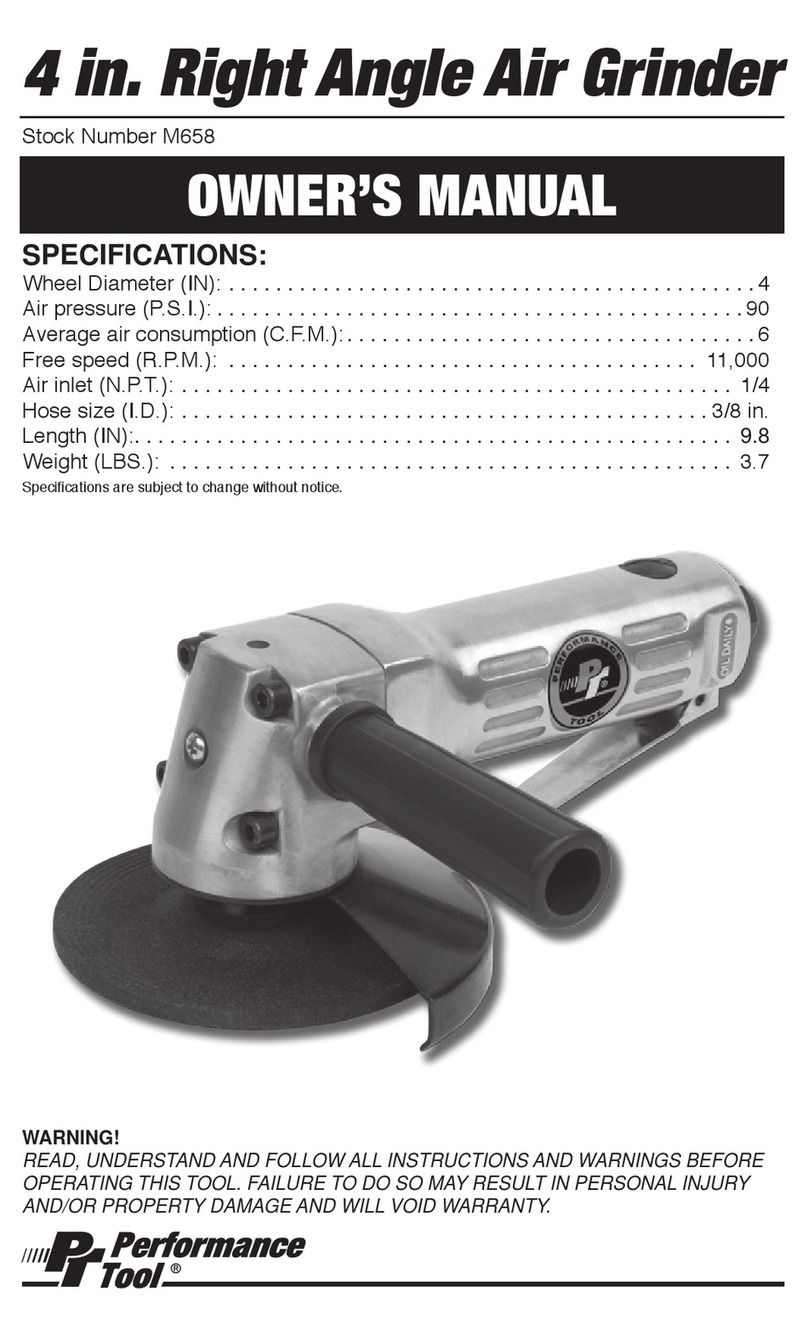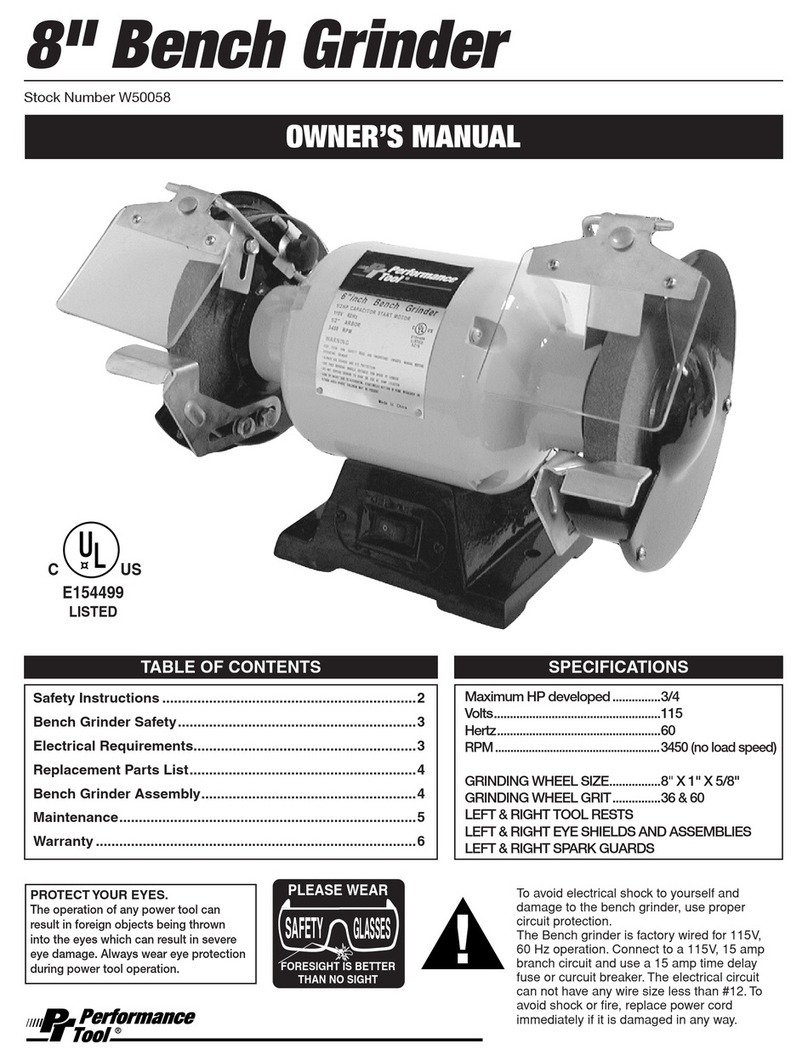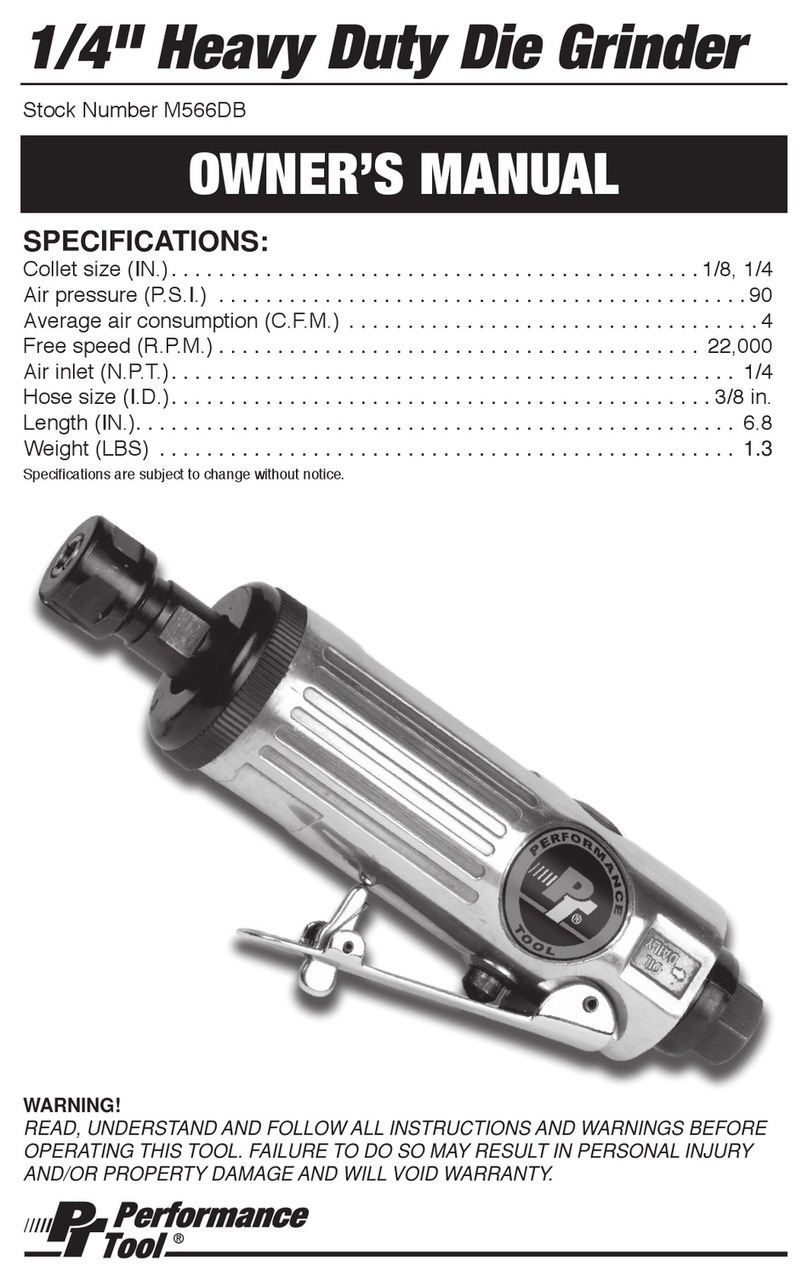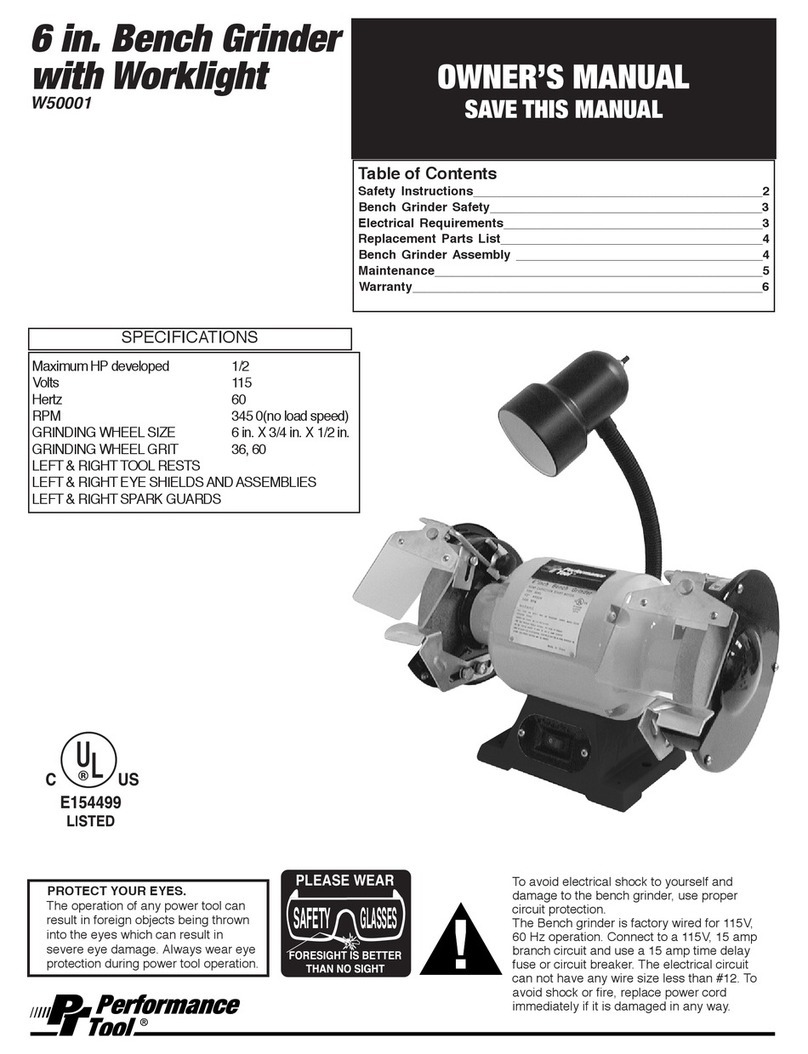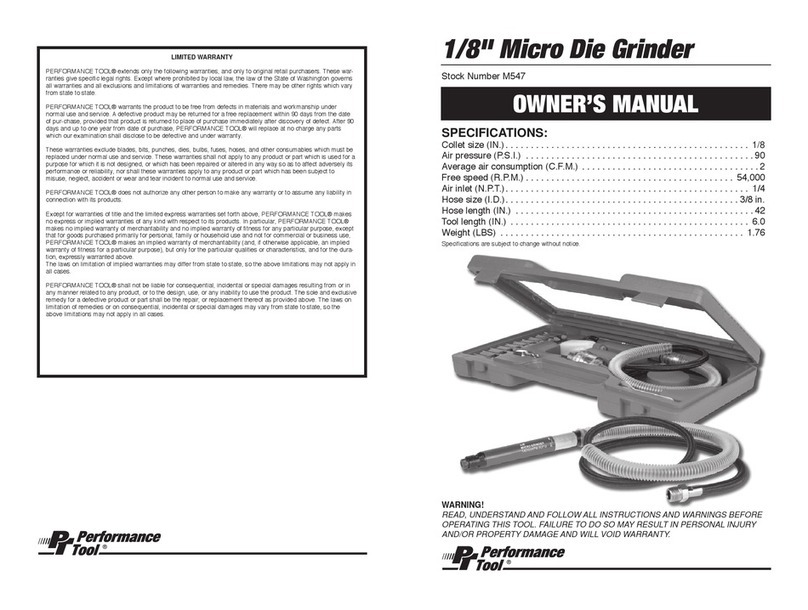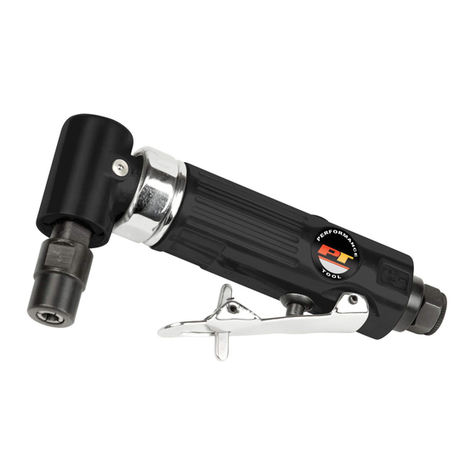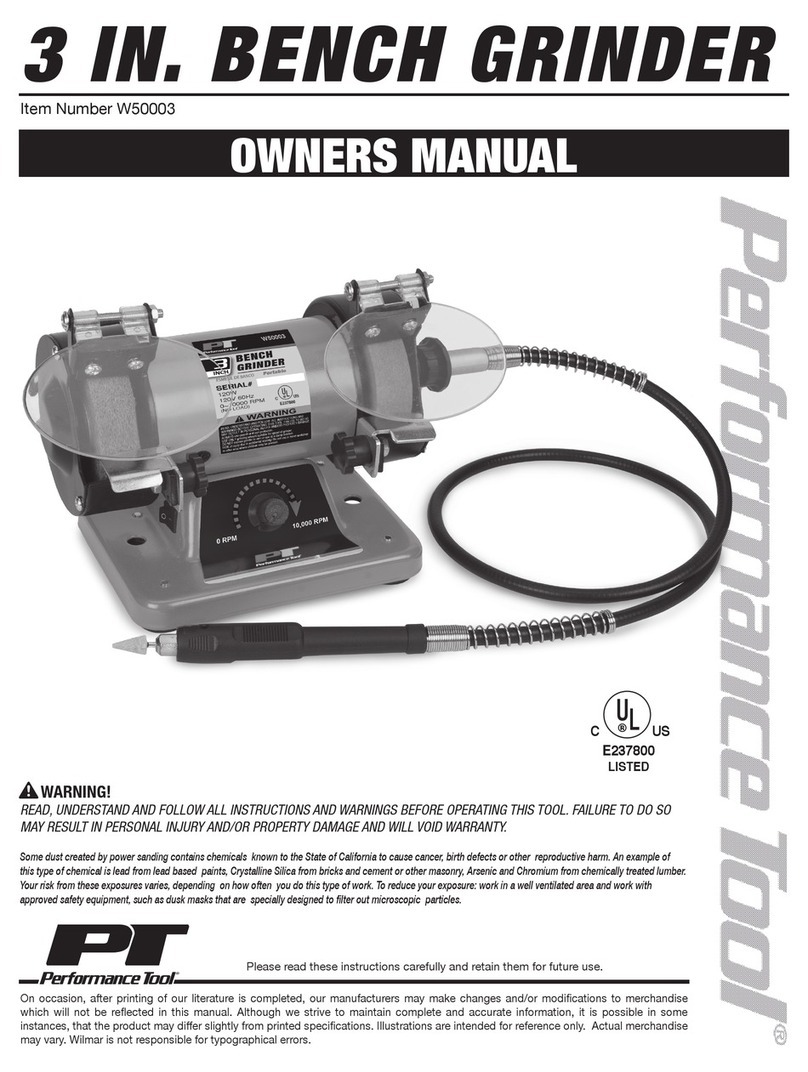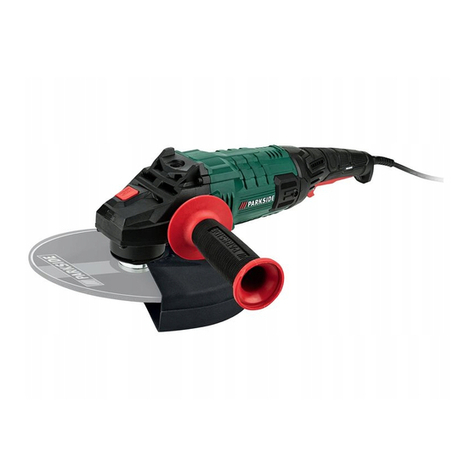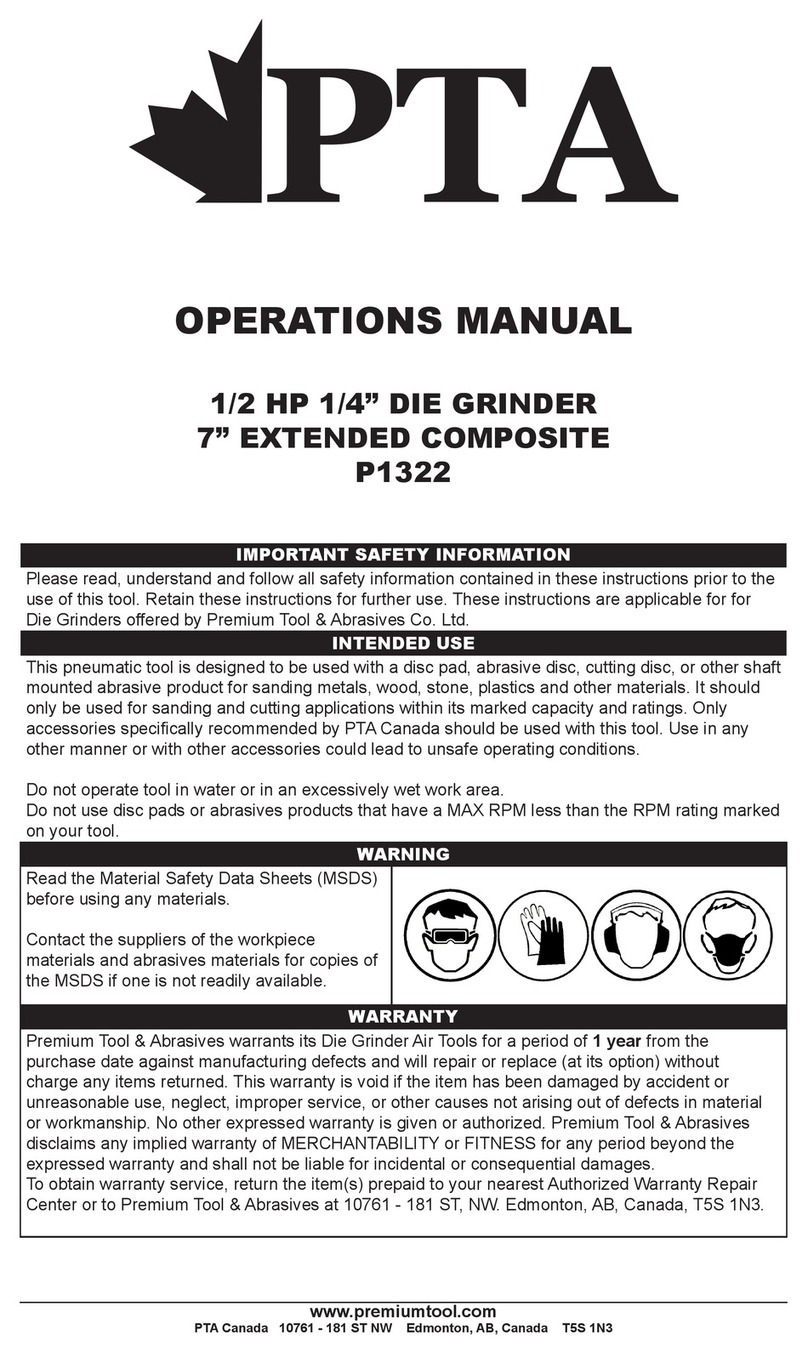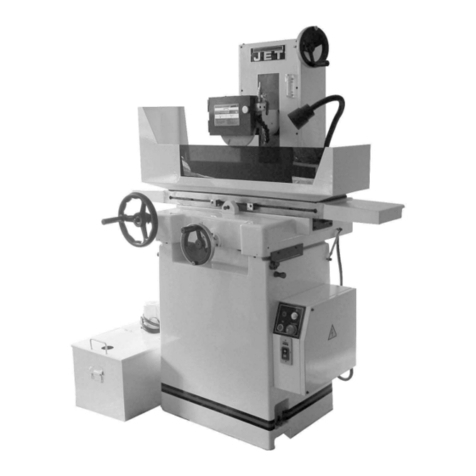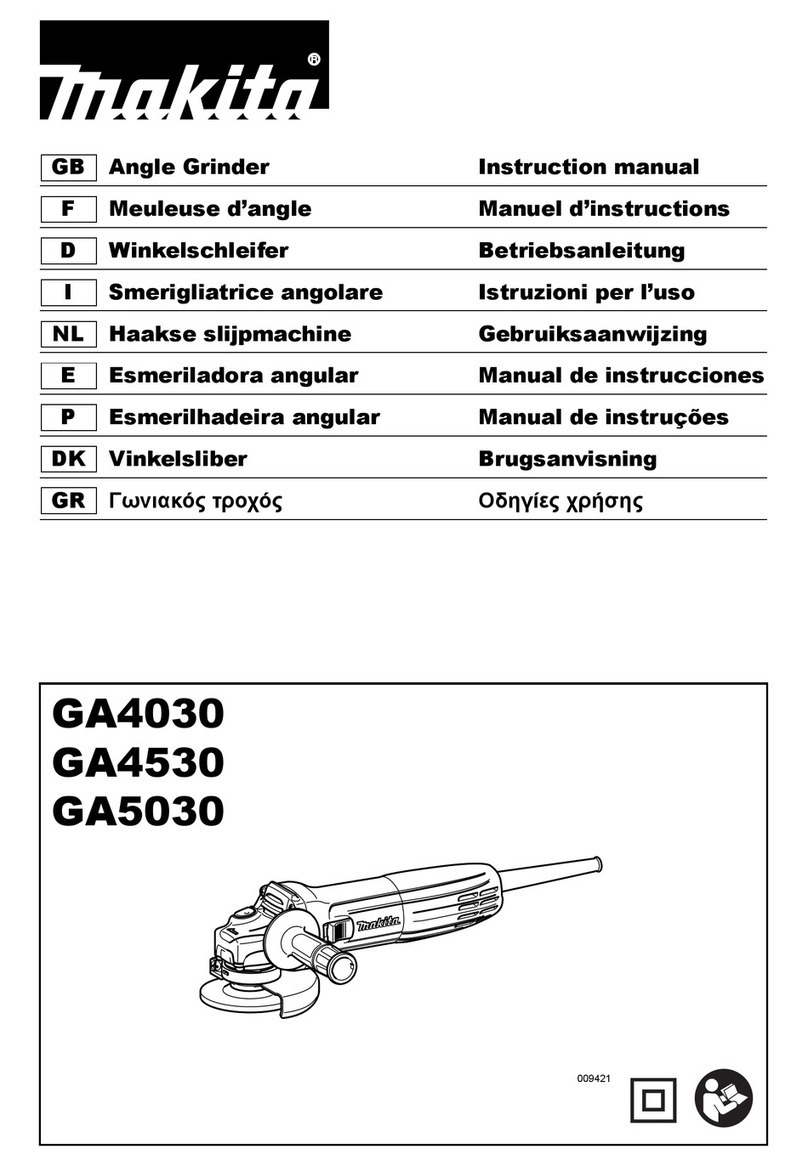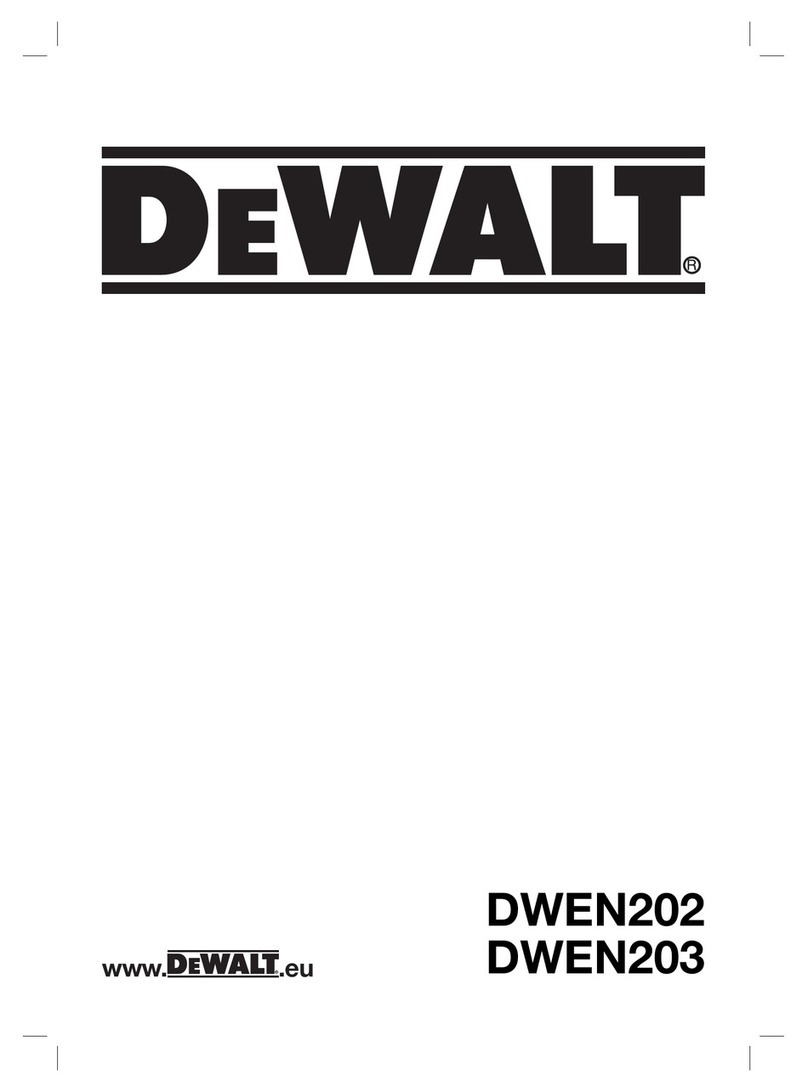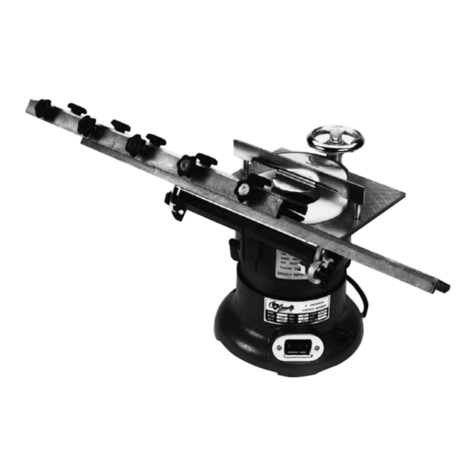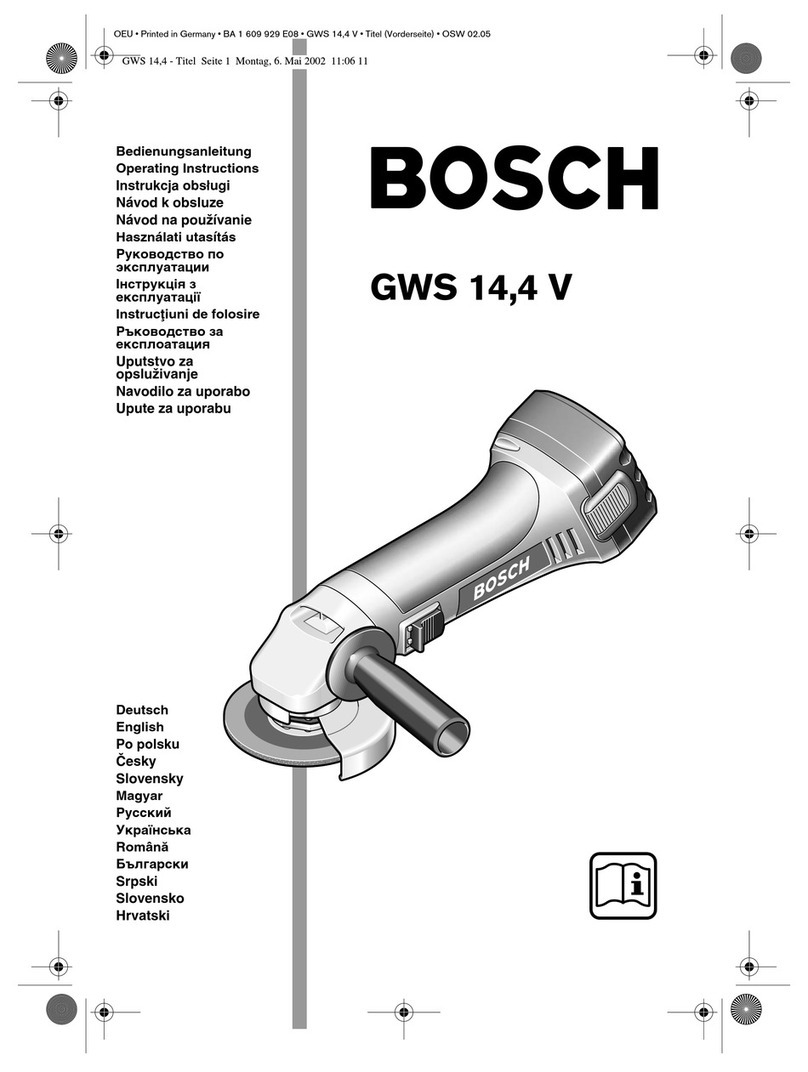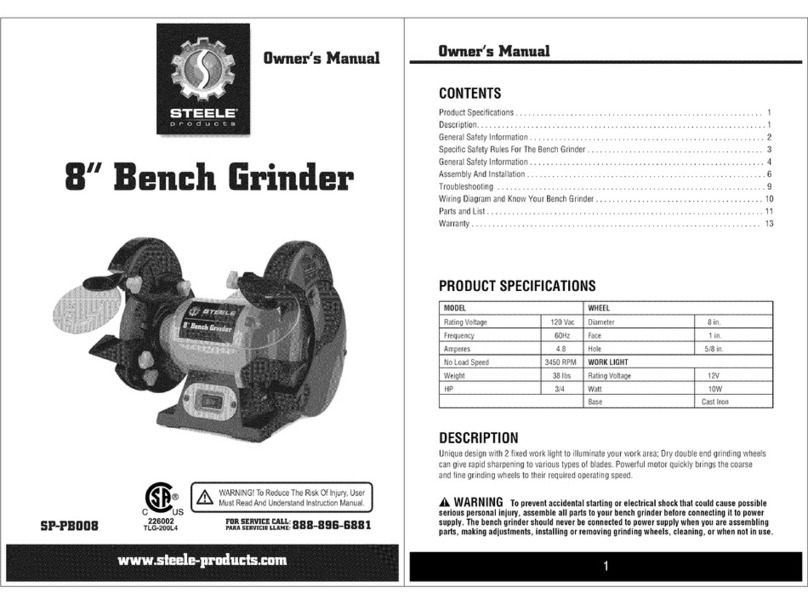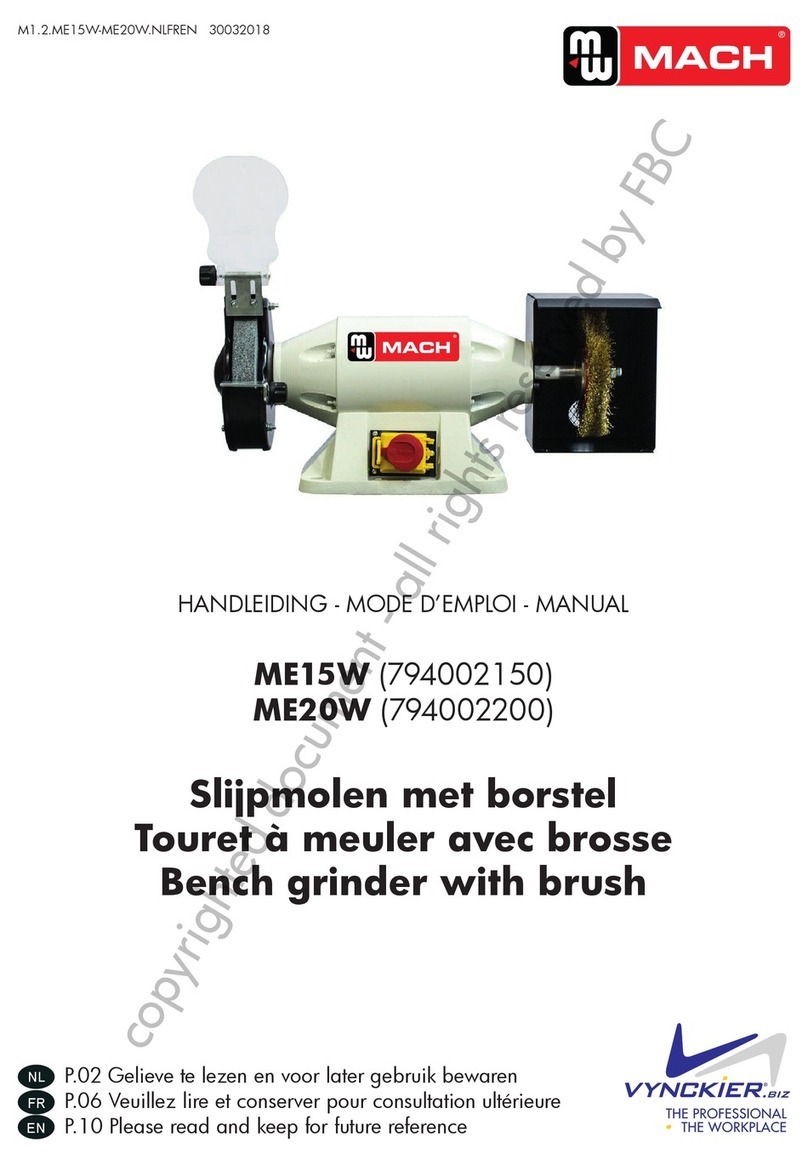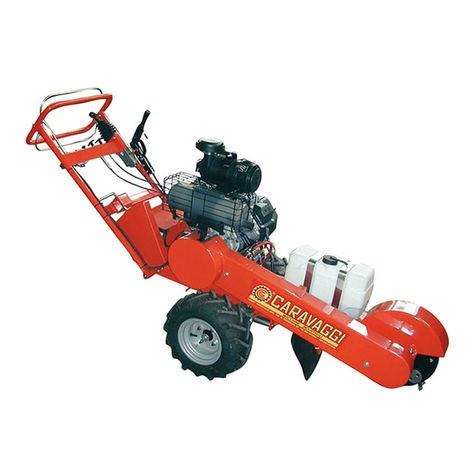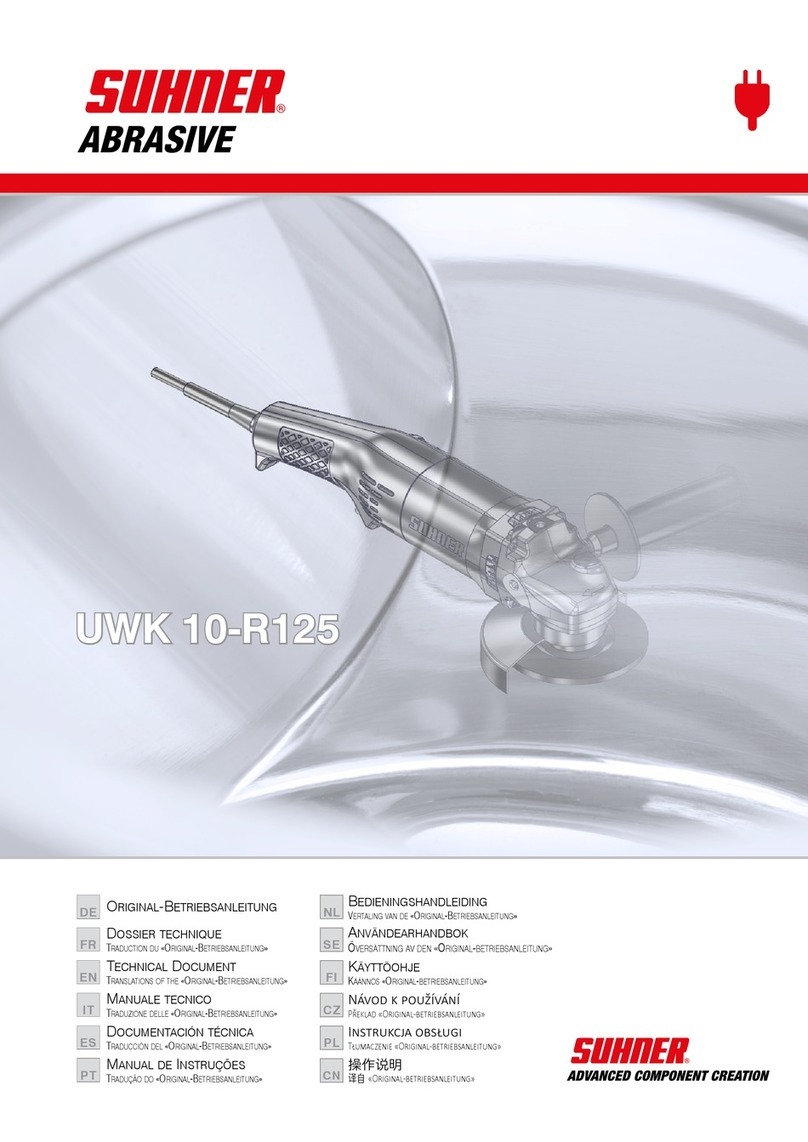IMPORTANT SAFETY INFORMATION
6.Dress properly. Do not wear loose clothing or jewelry.
Keep your hair, clothing and gloves away from mov-
ing parts. Loose clothes, jewelry or long hair can be
caught in moving parts.
7. Work Safe. Operate tool a safe distance from yourself
and others in the work area. Keep proper footing and
balance at all times. Do not overreach, especially on
ladders. Be certain ladders being used are sturdy,
stable, on a rm surface and erected as safe work-
ing angles. Do not reach over or across running
machines, hoses, cords, etc.
8.Inspect tool before every use; do not use if parts are
loose or damaged.
9.Do not alter this product in any way.
10. Use the right tool for the job. Do not attempt to
force a small tool or attachment to do the work of a
larger industrial tool. Don’t use a tool whose perfor-
mance is not adequate for your work. Do not modify
this tool and do not use this tool for a purpose for
which it was not intended.
11. People with pacemakers should consult their
physician(s) before use. Electromagnetic elds in
close proximity to heart pacemaker could cause
pacemaker interference or pacemaker failure. In
addition, people with pacemakers should:
• Avoid operating alone.
• Do not use with power switch locked on.
•
Properly maintain and inspect to avoid
electrical shock.
• Any power cord must be properly grounded.
Ground Fault Circuit Interrupter (GFCI) should
also be implemented – it prevents sustained
electrical shock.
12. Power tool plugs must match the outlet. Never
modify the plug in any way. Do not use any
adapter plugs with earthed (grounded) power tools.
Unmodied plugs and matching outlets will reduce
risk of electric shock. Do not use tool if plug is
damaged.
13. Avoid body contact with earthed or grounded
surfaces such as pipes, radiators, ranges and
refrigerators. There is an increased risk of electric
shock if your body is earthed or grounded.
14. Do not expose power tools to rain or wet conditions.
Water entering a power tool will increase the risk of
electric shock.
15.
Do not abuse the cord. Never use the cord for carry-
ing, pulling or unplugging the power tool. Keep cord
away from heat, oil, sharp edges or moving parts.
Damaged or entangled cords increase the risk of
electric shock. Do not use tool if cord is damaged.
16.
When operating a power tool outdoors, use only
a 3-wire grounded cord with a wire size of 14
gauge or larger. We recommend they be listed
by Underwriters Laboratories (UL) in the USA or
(CSA) Canadian Standards Association in Canada
and be suitable for outdoor use. Cords marked for
outdoor use are also suitable for indoor use. Use of
a cord suitable for outdoor use reduces the risk of
electric shock.
17. If operating a power tool in a damp location is
unavoidable, use a ground fault circuit interrupter
(GFCI) protected supply. Use of a GFCI reduces
the risk of electric shock.
18. Use power tool ONLY on adequately rated circuits
to avoid overheating of electrical systems.
19. Prevent accidental starting. Ensure switch is in the
“OFF” position before connecting to power source
and/or battery pack, picking up or carrying the tool.
Carrying power tools with your nger on the switch
or energizing power tools that have the switch “ON”
invites accidents.
20. Never let the power tool operate while unattended
and unplug when not in use or before servicing.
21.
Do not use the power tool if the switch does not
turn it on and off.Any power tool that cannot be
controlled with the switch is dangerous and must
be repaired.
22. Never use this tool without the proper guard. The
grinding wheel could shatter during use. Make sure
the guard covers the side of the wheel facing you.
23. Never bounce the tool while grinding. This may
crack the wheel.
24. Grinding metal will cause sparks! Keep them di-
rected away from people and ammable materials.
Always keep the guard positioned so that as much
of the exposed disc as possible is pointing away
from you.
25. Keep children and pregnant women away from the
work area until the grinding is completed and the
area has been cleaned up.
26.
Always wear full eye, face and body protection.
Wire bristles may break off and y toward the
user. Always wear ear protection when grinding
in enclosed spaces. Noise level may be amplied
in such locations and may cause permanent
hearing loss.
27. Always wear an OSHA approved dusk mask or
respirator when inside the work area. Replace the
lter daily. NOTE: Not all dust masks offer protec-
tion from lead paint dust. Be sure to use the proper
mask for the job.
28. Before connecting the tool to the power supply fol-
low the safety instructions for installing the grinding
or cutting wheels. Do not lock the wheels too tight
or cracks may occur.
29. Only use grinding or cutting wheels with the correct
bore size for the spindle of the grinder.
30. Use standard parts. Do not use coolant or water
and do not use as a xed grinder.
31. Do not start the tool when the grinding or cutting
wheels are touching the work area.
32. Keep the power cord well away from the cutting
area during use. Always position the cord so that
